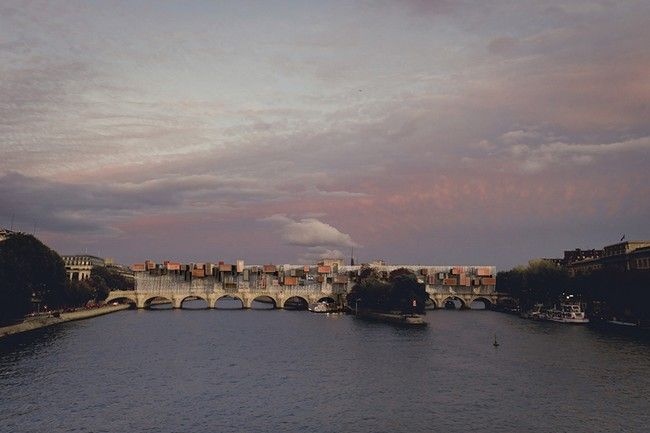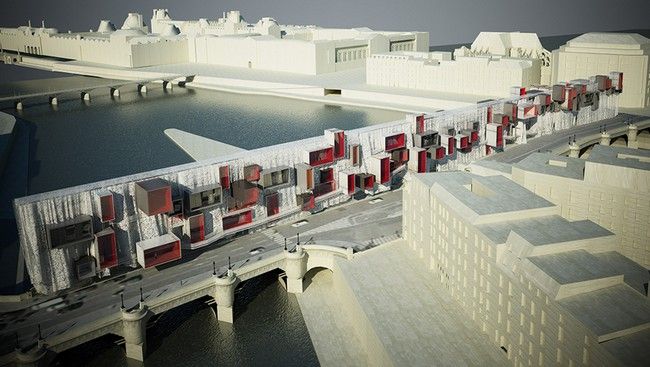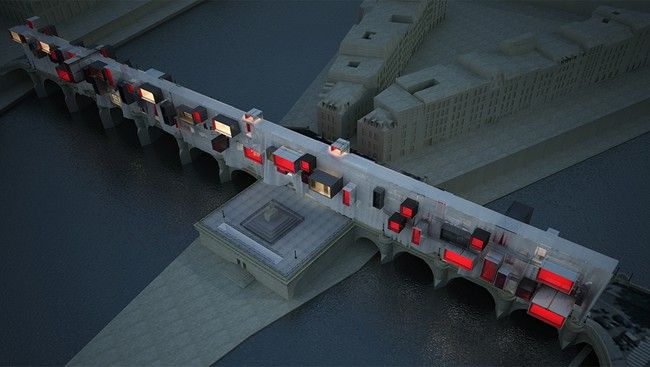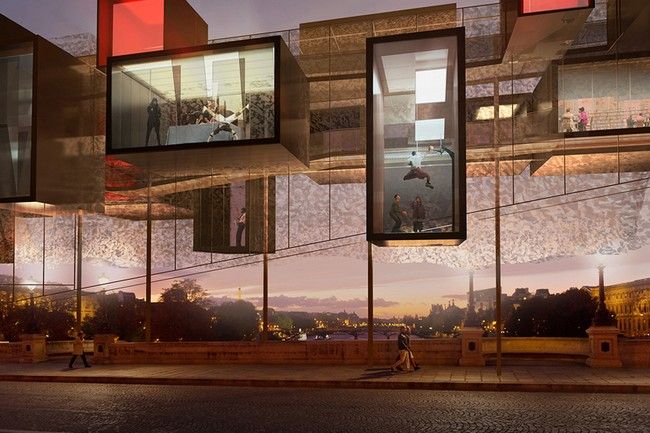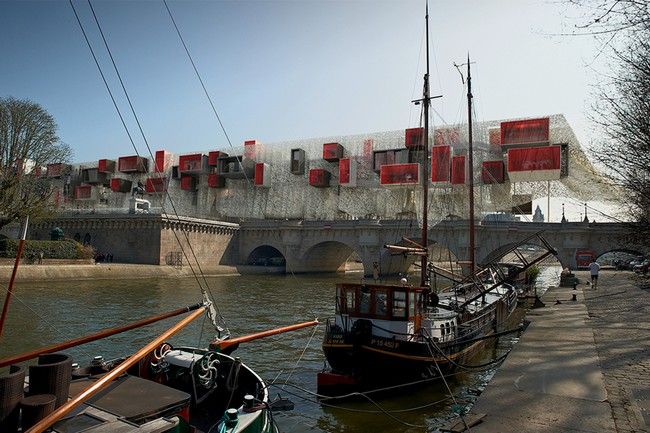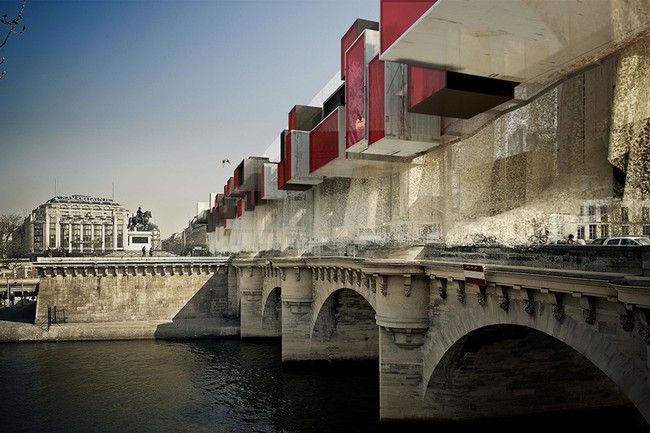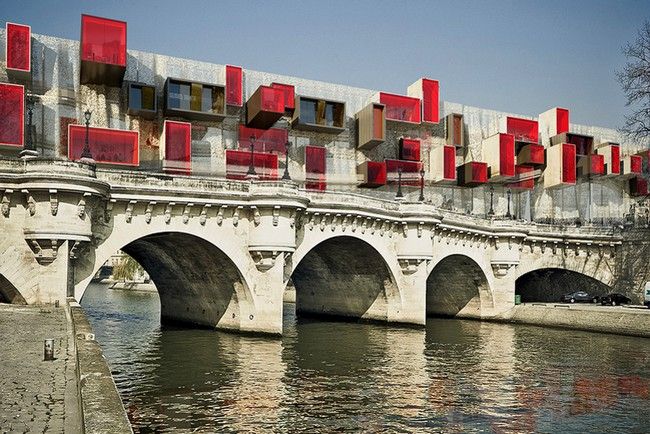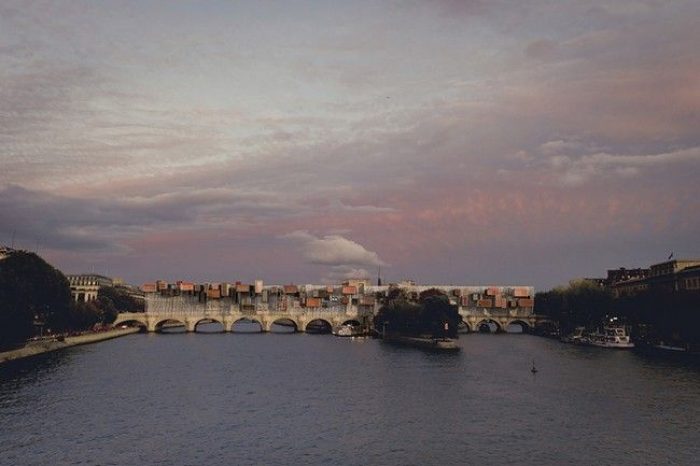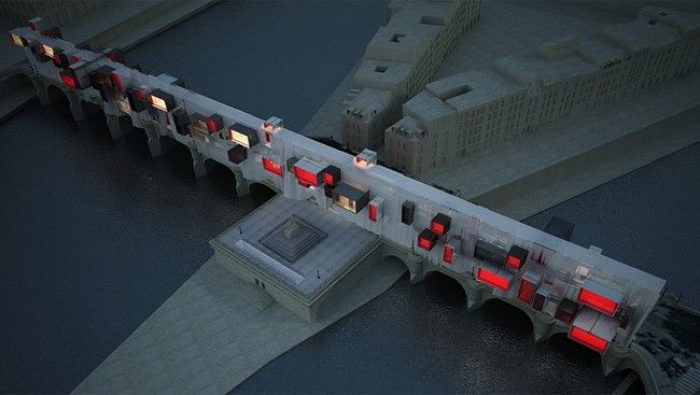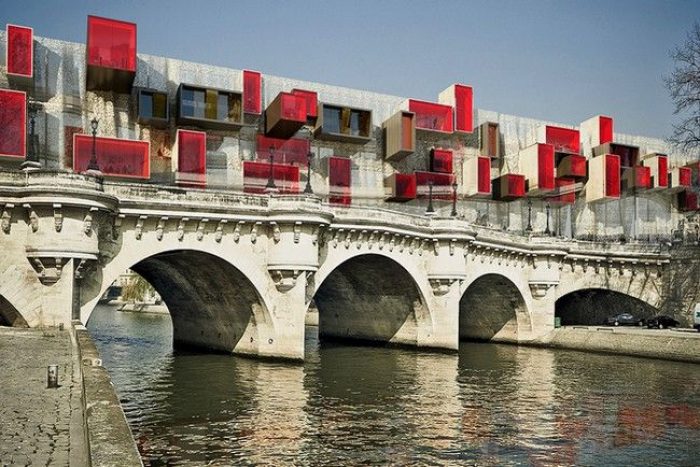A Nomadic micro city might just be the solution for the challenges facing today’s architecture. While cities rise and grow, the building industry and the urgent need for new affordable places to live are also on the rise. Since Architecture can no longer exist in a unilateral system, the French architect Stéphane Malka creatively visualized a solution to alleviate the problem through the nomadic micro city. This “voluntary ghetto” as described by Malka, is “an organized community of ideas, a hood built from an appropriation of land both conquered and controlled.”
The design narrows the gap between the architectural production and the real needs of the society. Incorporating the use of prefabricated hijacked construction systems, the design aspires to use the abandoned spaces within Paris. The nomadic micro city structure will be mounted on mobile scaffolding and can rise up to about 40 meters above the Pont Neuf Bridge. The modular micro-city will be interconnected through foot bridges; this multi-use structure embraces residences, shops, nightclubs, restaurants; all spaces within the city will be run by the inhabitants themselves. The uniqueness of this project lies within the fact that these configurations can be quickly erected and easily dismantled.
This flexibility of structure allows for various arrangements within the urban context depending on the number of users. This new urban layer within Paris displays its internal functions to the city through the overhanging volumes. Adding new layers to the historic cities could “change the uses and the morphology of the city” according to Malka.
By:Ala’ Abuhasan
